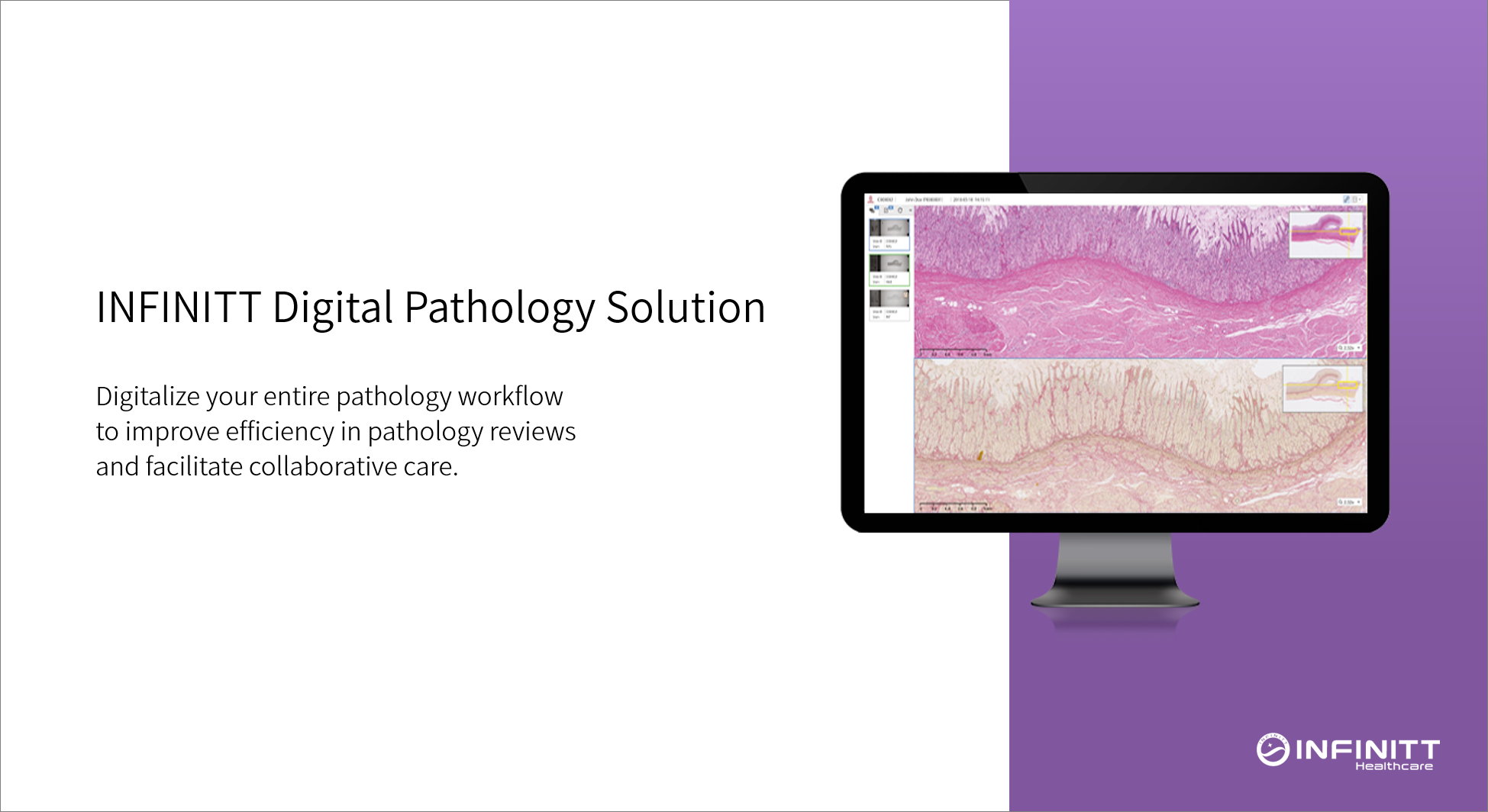
A pathologist looking at specimens under a microscope has long represented what pathology department is and how it works. But the future of pathology will look totally different, as the department is starting to go digital.
With the current low adoption of digital pathology worldwide, it might still sound vague to you. In this product essay, we are going to explore a fully digitalized pathology environment realized by INFINITT Digital Pathology Solution, which incorporates the standardization, interpretation, sharing, and utilization of digital pathology images. But first of all, let’s see what is pushing pathology departments to go digital.
Main drivers for digital pathology
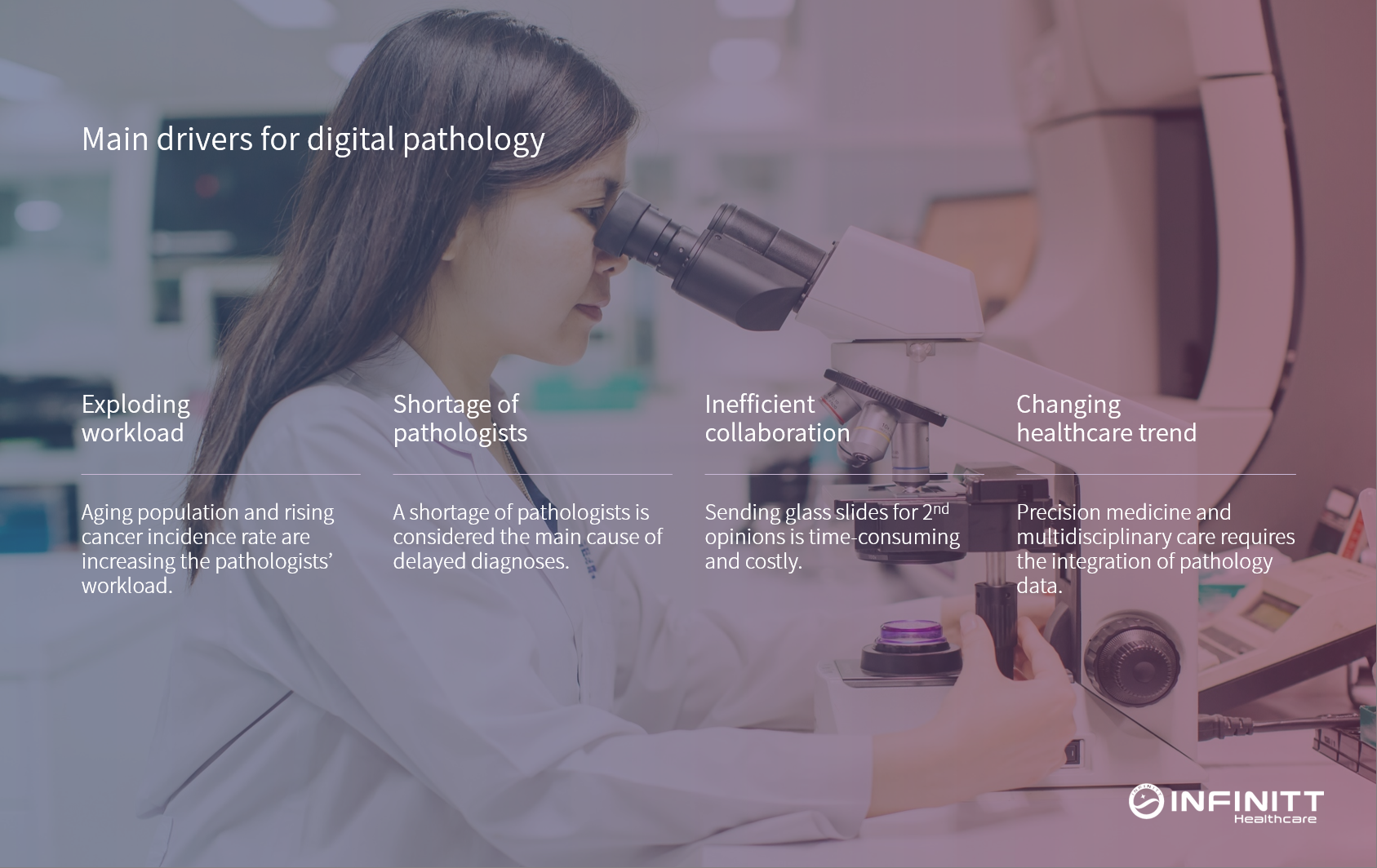
First of all, pathologists’ workload is sharply increasing due to aging populations and rising cancer incidence rates around the world. At the same time, the number of pathologists is decreasing, which has become the main cause behind delays in the diagnosis and treatment of patients.
Another challenge pathologists face is the inefficiency in sharing second opinions. Sending glass slides to and from pathology labs is as time-consuming and costly as it sounds. Not to mention it entails the risk of damaging or losing specimens.
Changing healthcare trends are also driving the digitalization of pathology. The adoption of data-driven precision medicine and multidisciplinary care is accelerated by advancements in deep learning and artificial intelligence technologies. And since pathology provides information critical to diagnosis and treatment monitoring across the continuum of patient care, the digitalization of pathology data is considered a prerequisite for realizing precision medicine and multidisciplinary care.
Digitalizing the pathology workflow
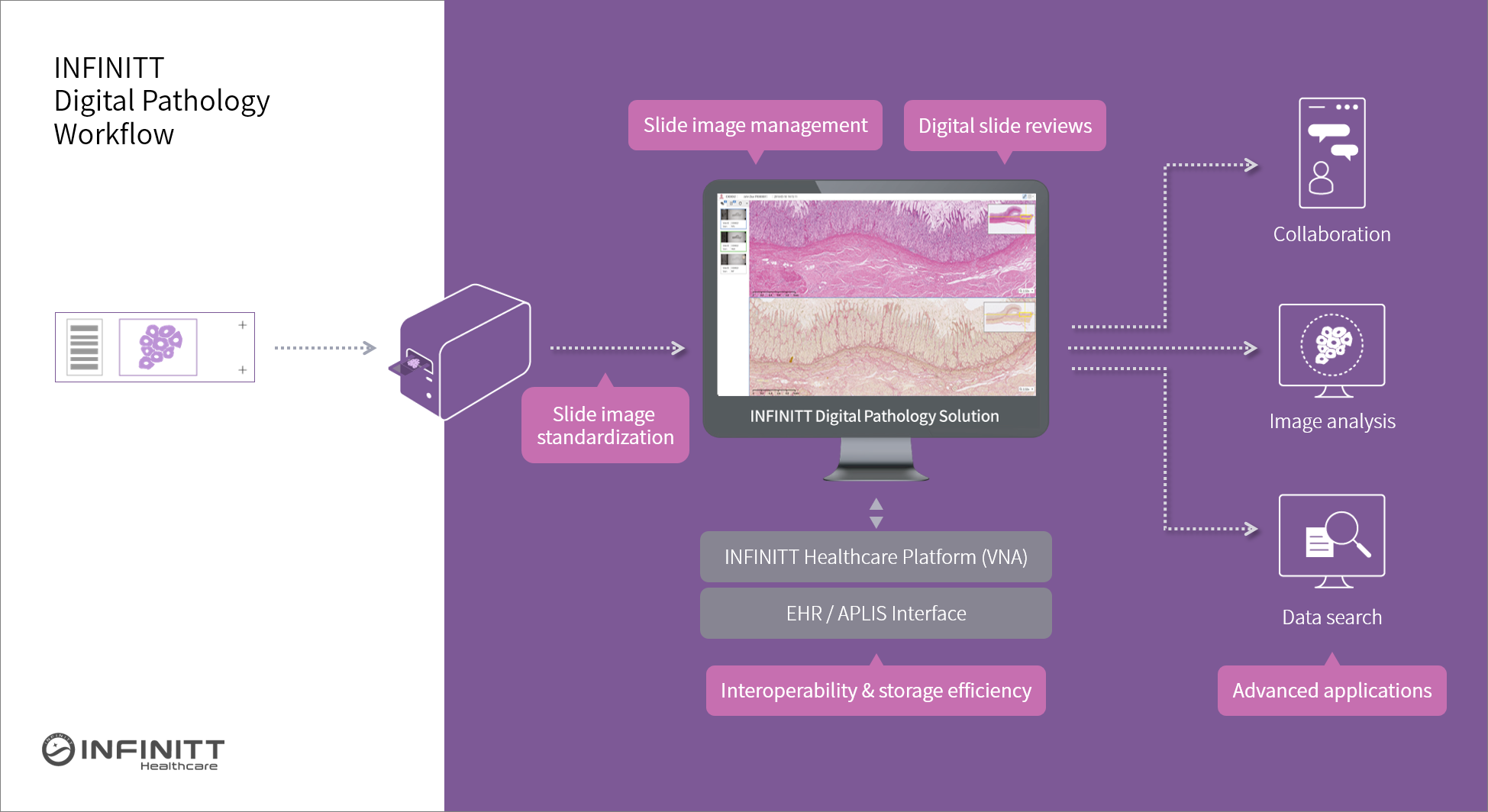
Digital pathology refers to a digitalized environment where pathologists can access, manage, share and analyze digital images scanned from glass slides. They can review digital pathology slides directly from their monitors instead of looking at glass slides under microscopes. They can also send image files to other pathologists for second opinions without sending the original glass slides.
INFINITT Digital Pathology Solution plays a pivotal role in this digital pathology workflow, encompassing the standardization, management, interpretation, and sharing of digital slides. Now, let’s take a look at each step of the workflow from a pathologist’s perspective.
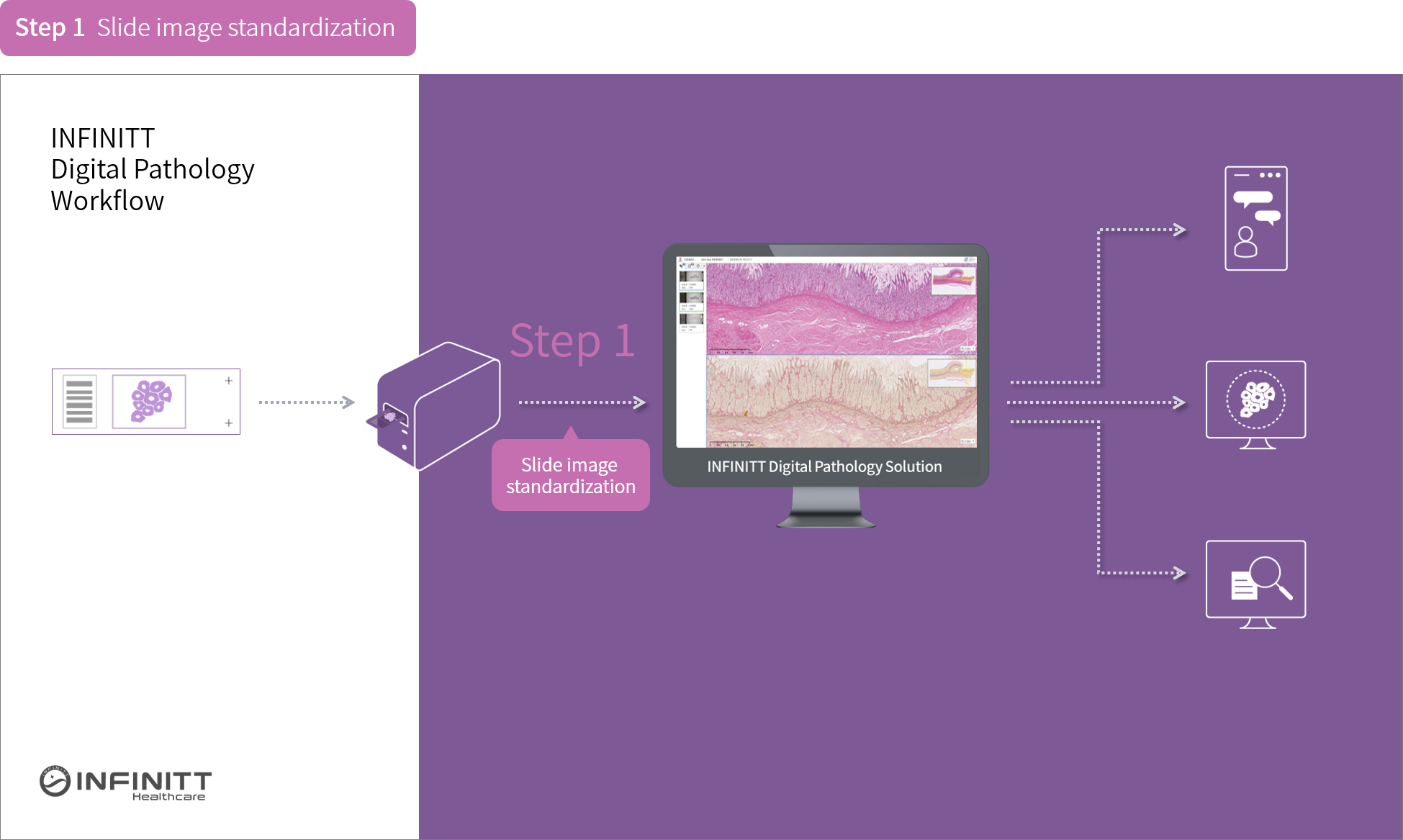
INFINITT Digital Pathology Solution collects digital slide images captured using scanners from various vendors including Aperio, Ventana, 3DHISTECH, Hamamatsu, Claro, and VisionTeck. Then it converts all the images into DICOM (Digital Imaging and Communications in Medicine) standard format for compatibility. Without this standardization process, slide images remain in proprietary formats of the specific scanner that was used. It means you cannot access images scanned using scanners from other vendors. However, with the completely vendor neutral INFINITT Digital Pathology Solution, you can access all the images regardless of scanner, format, or vendor.
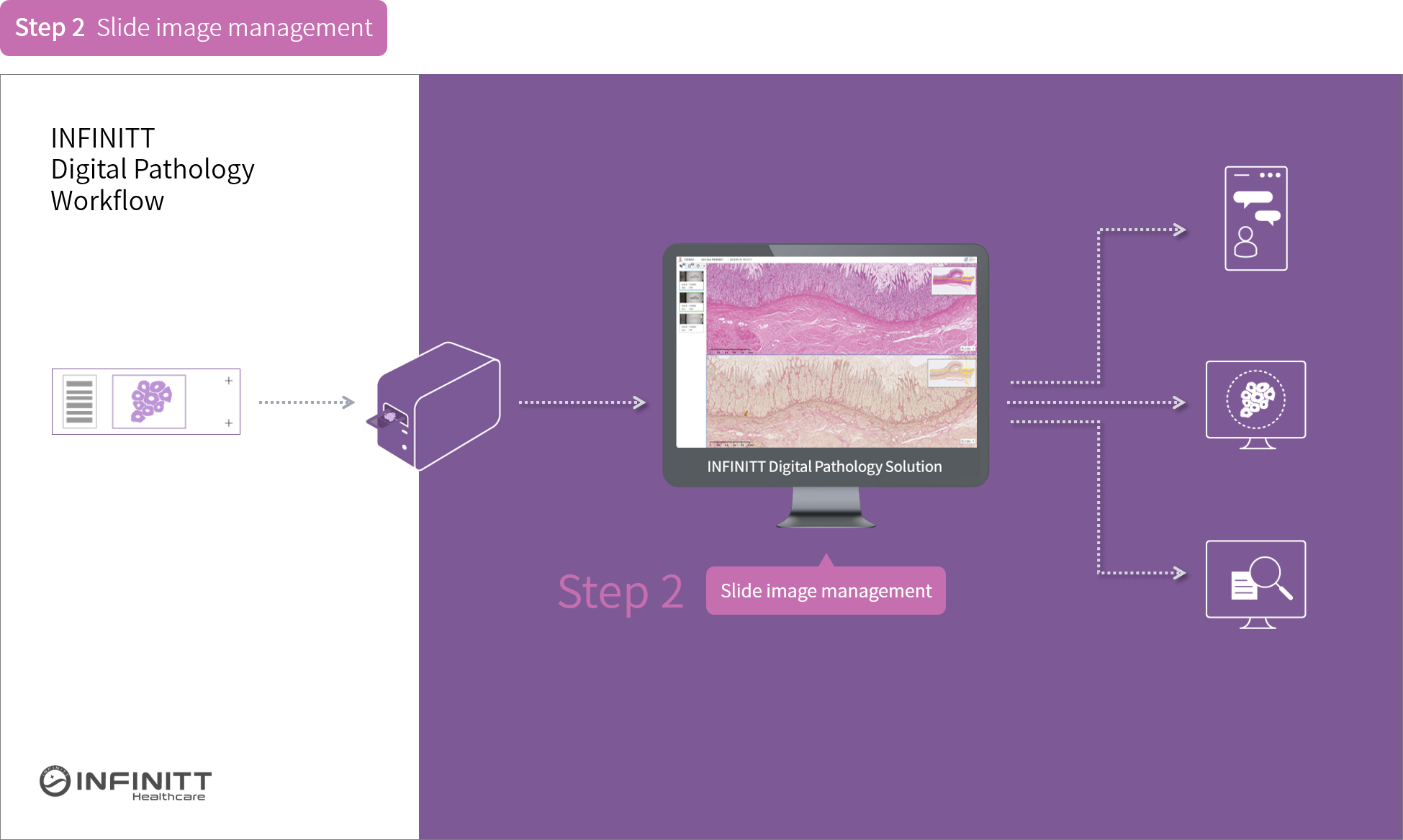
Once the slide images are standardized, you can easily manage them from a single point of access. By logging onto INFINITT Digital Pathology Solution from any Internet-connected PC, you can review the slide images any time, from anywhere. You can also manage images by slides or cases.
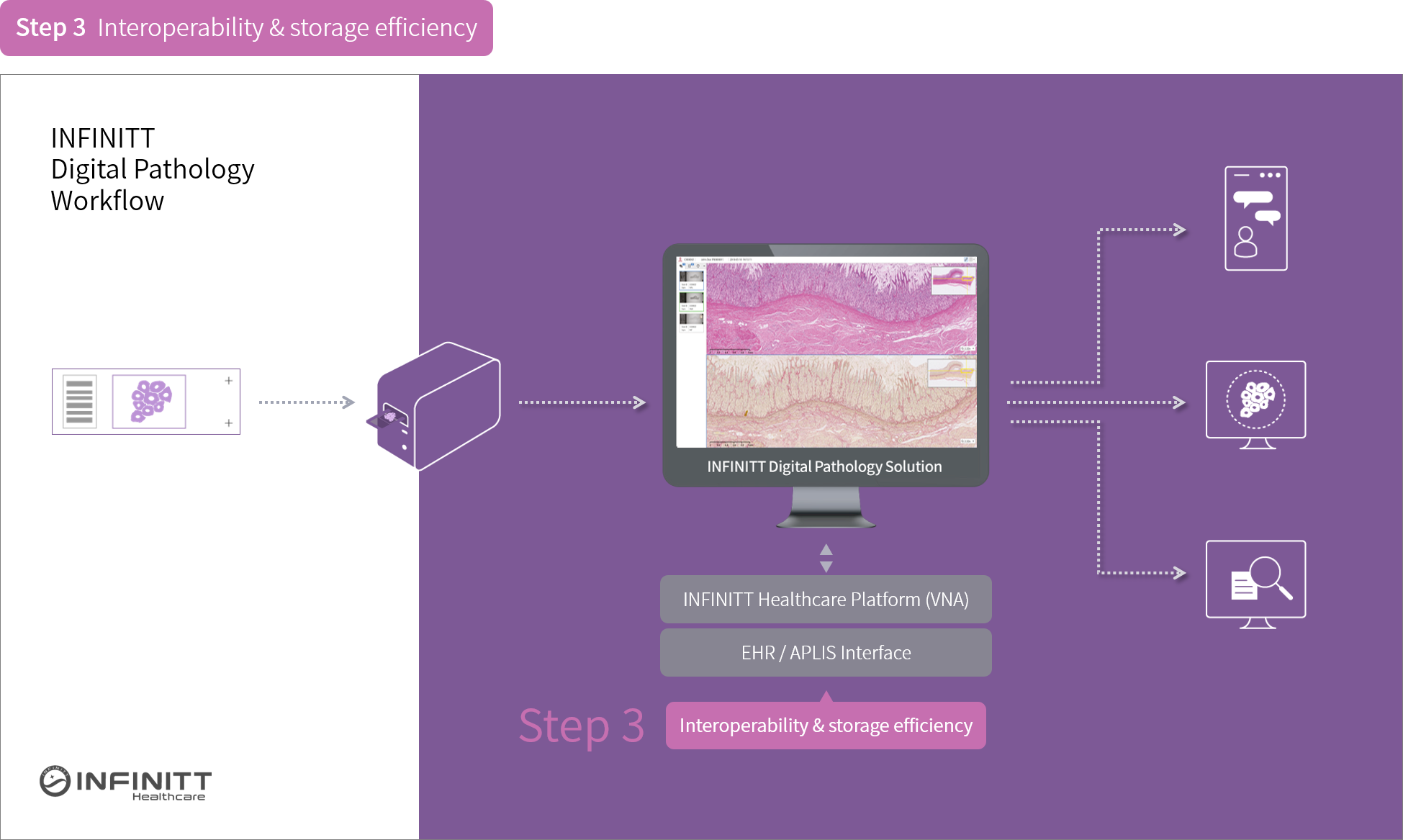
Interface between INFINITT Digital Pathology Solution and your EHR/APLIS enables seamless access to all the data you need for reading. By opening our viewer from EHR/APLIS or vice versa, you can access gross images as well as patient, slide and case information. You can also reduce human errors as slide images are automatically matched with corresponding patient data.
Through interface with our vendor neutral archive, INFINITT Healthcare Platform, you can access data from other specialties such as radiology. A patient’s data can be seamlessly accessed across different specialties and utilized for patient-centered practices. Moreover, you can manage data storage more efficiently through its Information Lifecycle Management (ILM). Given that pathology images are enormous in size and take up lots of storage, it could be an effective strategy for addressing the storage issue your pathology department is faced with.
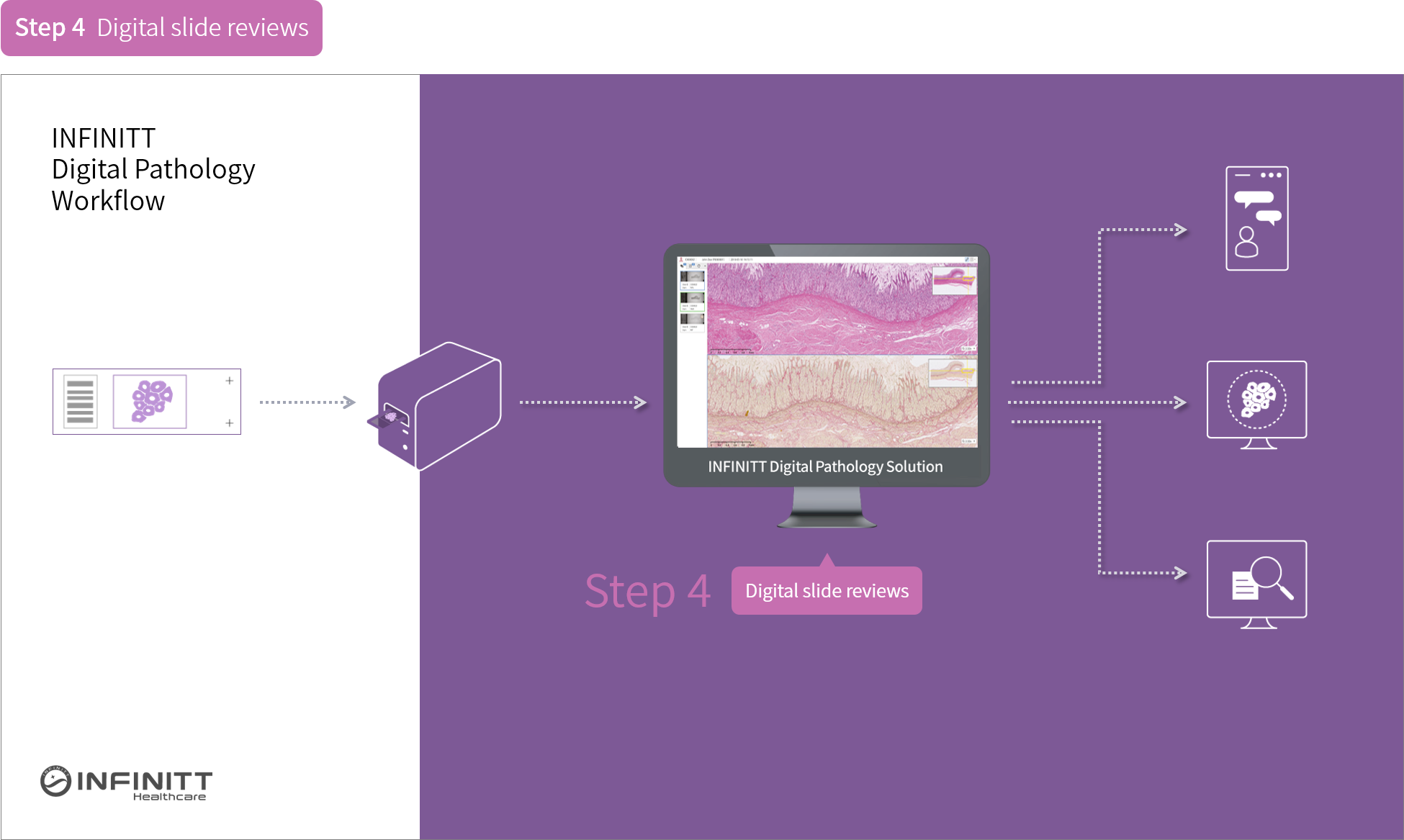
INFINITT Digital Pathology Solution provides a set of pathology-exclusive view modes and features. You can review slides more efficiently and reduce any mistakes that might incur from the current, manual way of reading.
• The viewer automatically measures the size of region of interest and manages annotations on a per-user basis.
• History Tracking Map keeps track of the parts already reviewed and at high magnification.
• Compare Mode displays synchronized slides of a case on the viewer.
• Z-Stack View displays the same area of the image from multiple focal plans, identifying overlapping cells that you could’ve missed.
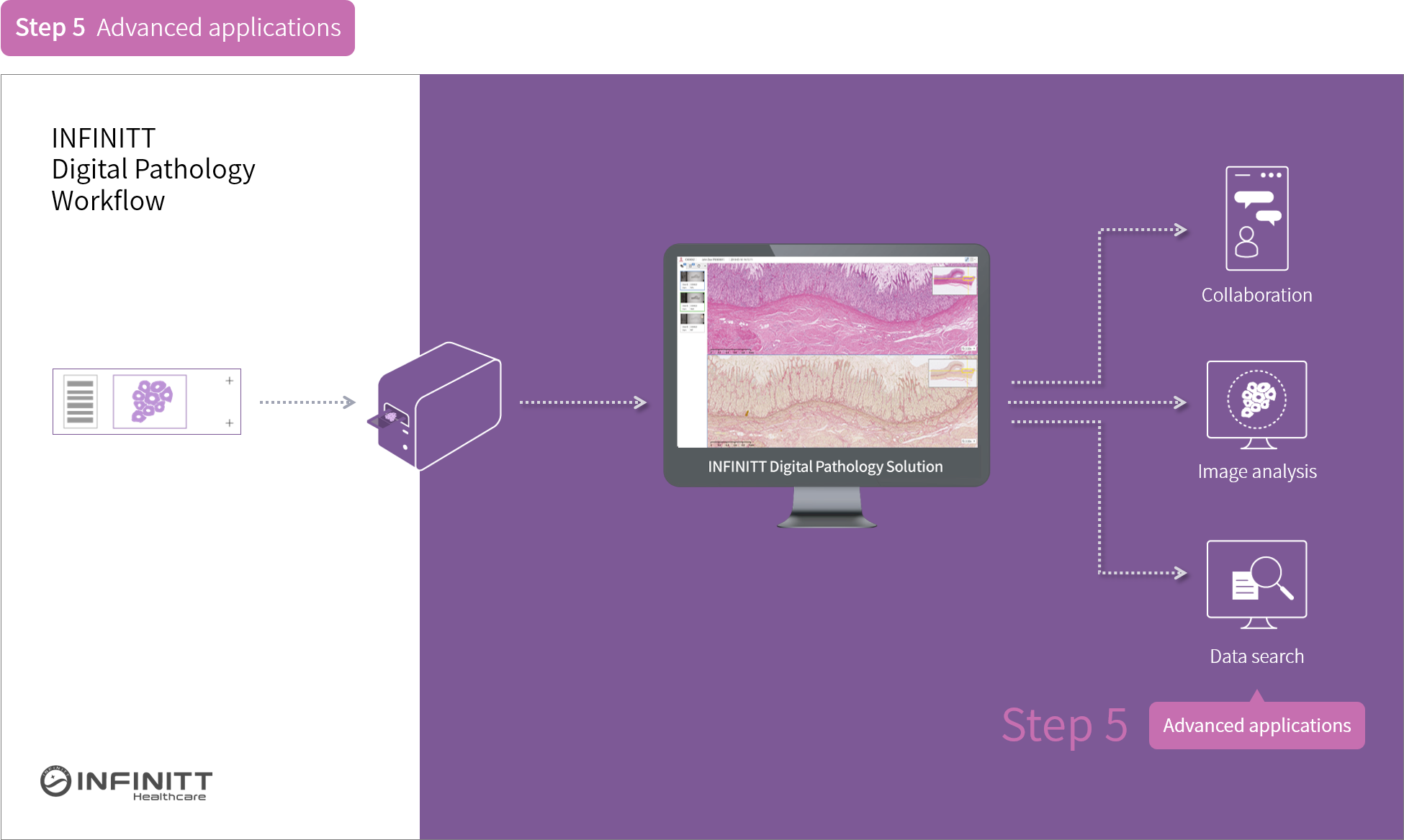
You can interface INFINITT Digital Pathology Solution with advanced applications optimized for your specific needs such as collaborative care, image analysis, and report search. These applications are not only available for interface with INFINITT solutions, but also with other vendors’ solutions. INFINITT Digital Pathology Solution can interface with other 3rd party systems in a vendor neutral manner as well.
• Our collaboration tools including a messenger enable you to share second opinions with other pathologists in real time.
• AI-empowered image analysis solutions help you make more precise and consistent diagnosis of various diseases. Deep learning algorithms trained based on huge datasets of digital slides can detect abnormal mutations faster and more accurately.
• INFINITT Healthcare Analytics – Enterprise Search (report search solution) enables you to search and refer to past pathology and radiology reports in real time when reviewing slides or conducting research.
Benefits of going digital in your daily workflow
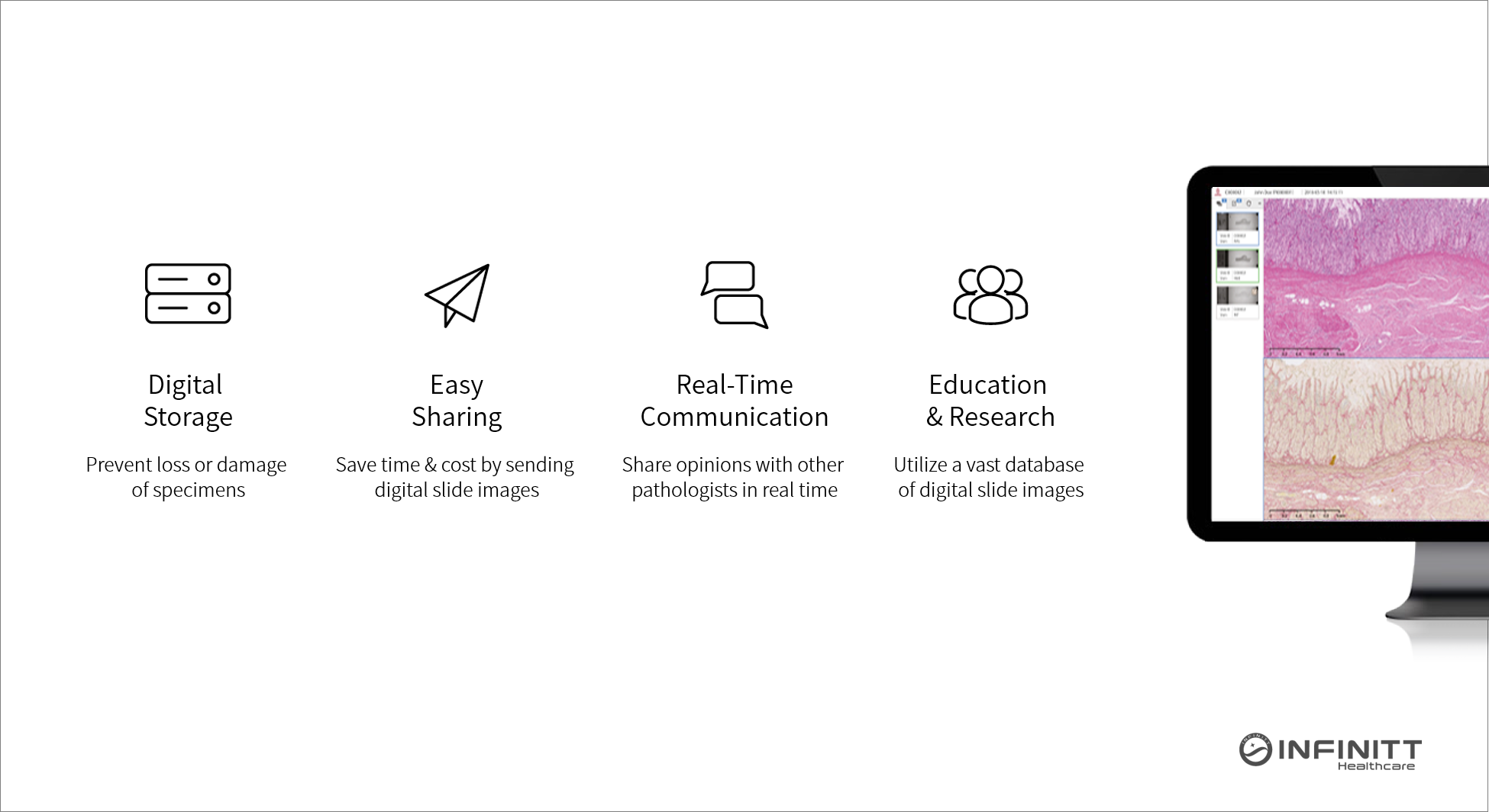
By going digital with INFINITT Digital Pathology Solution, you can significantly streamline your daily workflow. First, standardized digital slides are easier to manage and share. You can save slide images in a digital storage and manage them from a single point of access. It’s also easier to share digital slides with other pathologists in real time, while keeping the original glass slides intact. Lastly, you have access to a vast database of slide images and reports to utilize in teaching and research.
What digital pathology will bring in the future
Once large datasets of pathology slides are digitalized, they become valuable resources for data analytics. Deep learning algorithms and artificial intelligence applications trained on big data will be able to assist pathologists with their daily workloads. At an early stage of development, these applications will most likely perform repetitive, relatively less important tasks such as counting cells and detecting patterns in the slide images. However, the gradual automation of the pathology workflow is expected to address the problem with increasing workloads and a shortage of pathologists.
The digitalization of pathology will also accelerate the practice of data-driven precision medicine and multidisciplinary care. Integrated with data from other specialties including radiology, radiation oncology and etc., pathology data will play a key role in enabling a holistic approach to diagnosis, follow-ups, and treatments of a patient.
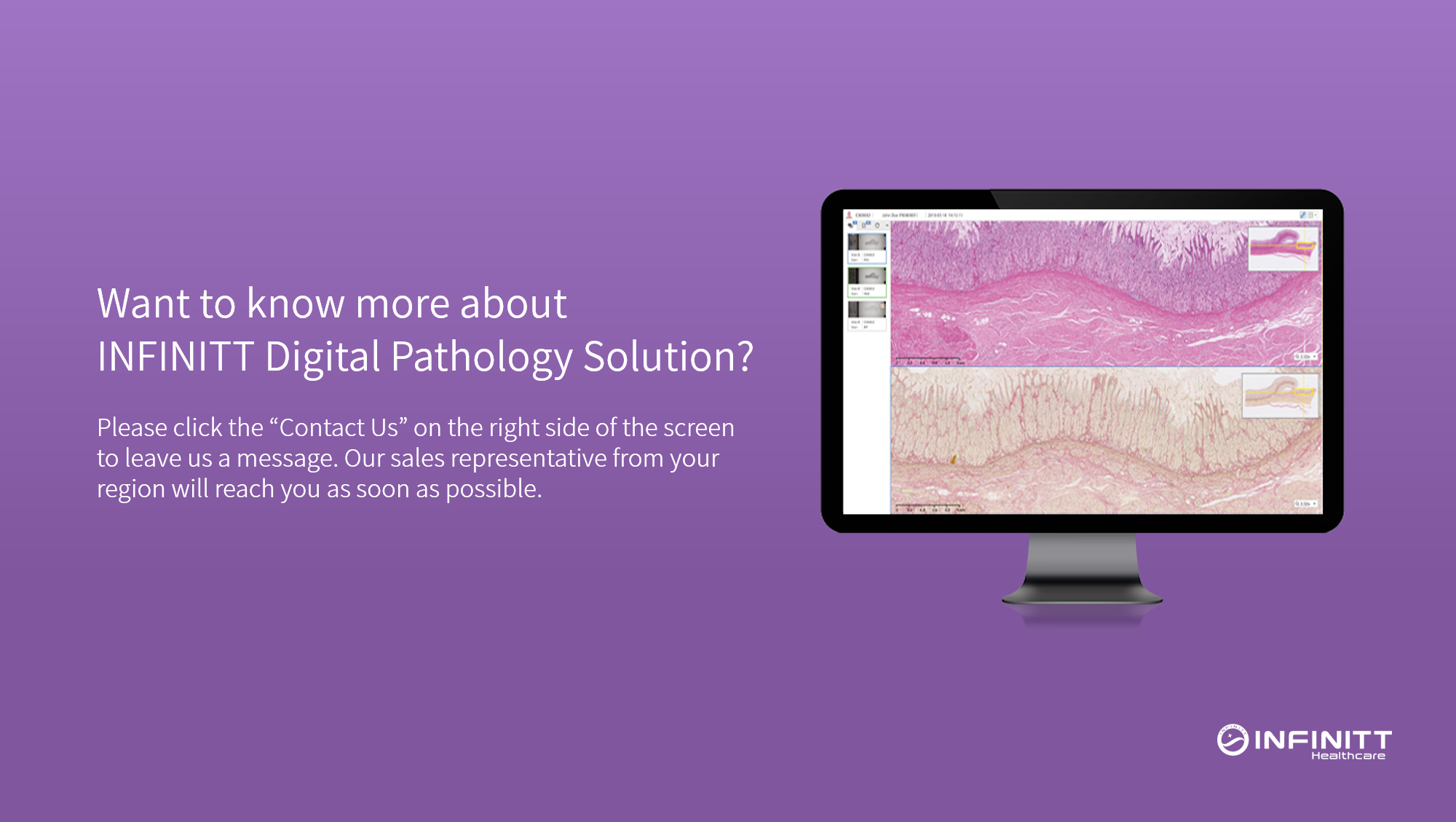
-
Product Essay
INFINITT Enterprise Search: Streamlining radiologists’ search for the right data
#INFINITT_Enterprise_Search #radiology #data_use
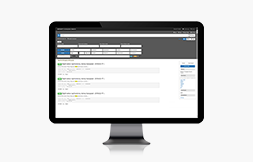
-
Product Essay
A systematic, data-driven approach to dose management
#INFINITT_DoseM #dose_management
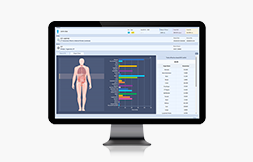
-
Product Essay
Data assetization: unlocking the true value of medical data
#data_assetization #enterprise_imaging #INFINITT_Healthcare_Platform

-
Product Essay
INFINITT PACS 7.0, redefining PACS for the evolving role of radiologists
#INFINITT_PACS #AI #collaboration #reading_productivity
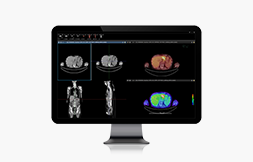
-
Product Essay
How INFINITT MDT streamlines workflow for your multidisciplinary teams
#multidisciplinary_care #INFINITT_MDT
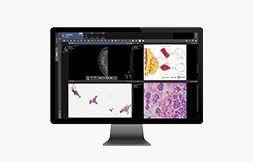
-
Product Essay
Enterprise imaging: all-in-one imaging strategy for healthcare enterprises
#enterprise_imaging #data_integration #data_sharing #multidisciplinary_care #big_data #AI

-
Product Essay
Managing radiation dose with INFINITT DoseM
#dose_monitoring_solution #DRL #cumulative_dose #protocol_management

-
Industry Insight
Dose management policies in the U.S., Europe and Japan
#radiation_dose #patient_safety #regulatory_policies #reimbursements

-
Product Essay
Why you need a digital pathology solution
#digital_pathology #INFINITT_DPS

-
Industry Insight
A beginner's guide to pathology
#pathology_workflow #digitalization_of_pathology #challenges
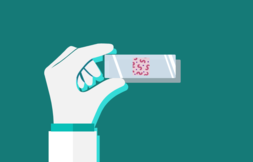
-
Product Essay
The medical big data platform—INFINITT Healthcare Platform (IHP)
#medical_big_data #VNA #enterprise_imaging_platform

-
Industry Insight
Why data integration is important in healthcare
#medical_big_data #integration

-
Industry Insight
The three big questions about medical big data
#medical_big_data #what_is_it? #how_big? #how_diverse?





